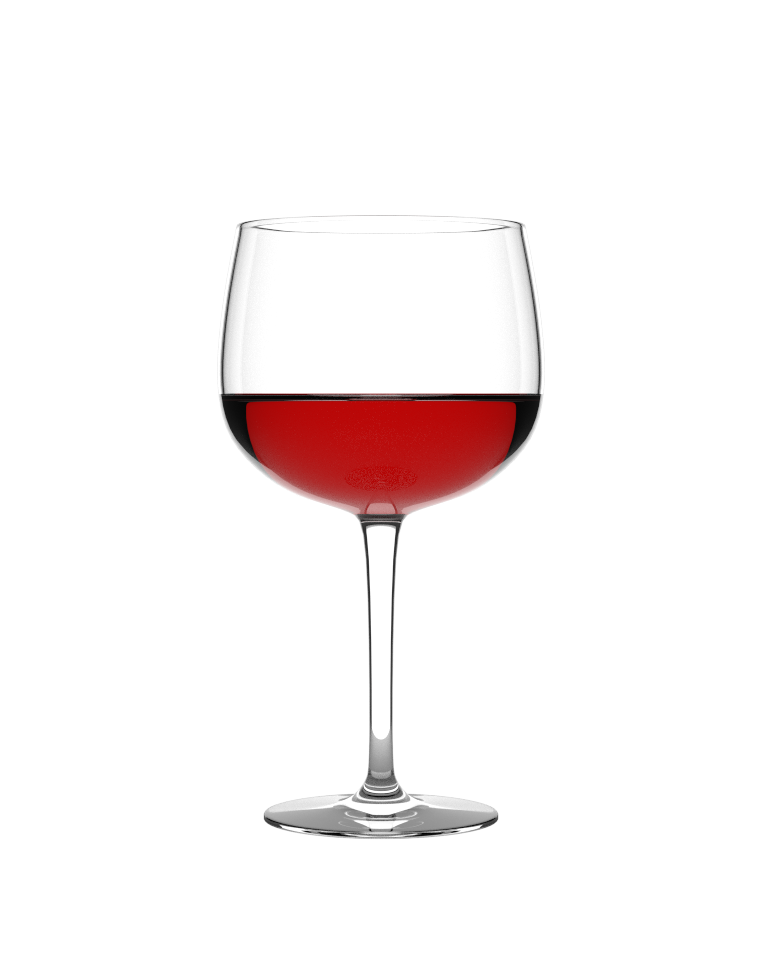A couple of things to pay attention to with fluid regarding materials is the IOR (Index of Refraction). You can use a Glass Shader for most liquids. For something like milk you'll want an SSS Shader (Sub-Surface Scattering). For something like wine though, go with a Glass Shader.
Water has an IOR of 1.33 and that number is worth committing to memory (it varies slightly depending on the temperature.) Here is a list of IOR values of common liquids. Wine is not on that list but other alcohols like Vodka (1.363) and Whisky (1.356) are, so my first thought was to use a value in the 1.35~1.36 range and call it close enough... but then I decided to search "red wine IOR" and I found a super-detailed article on the optical properties of red wine.
Here's a chart:

Original URL of the chart is here.
Full article URL is here.
In short, the average Index of Refraction of red wine is about 1.345, so you can use that, or any of the IOR values from the samples on that chart.
IOR is not something to obsess over, but since you can usually find the IOR values for many common materials with some quick searching I find it's best to just look it up, plug in the number, and then move on to tweak the color and other properties of your liquid.
Another thing you might try is using a Volume Absorption Shader in conjunction with your Glass Shader to make your wine look thicker where it is denser. Red wine has sediment, so it will be a much deeper red the further in you go. A Volume Absorption Shader can help you get this look. Play with the "Density" value until you get something that looks right to you.

Finally, I realize you're not planning to do any fluid simulation, but I'll leave these two fluid sim tutorial links up for anyone who is interested:
1, 2.










